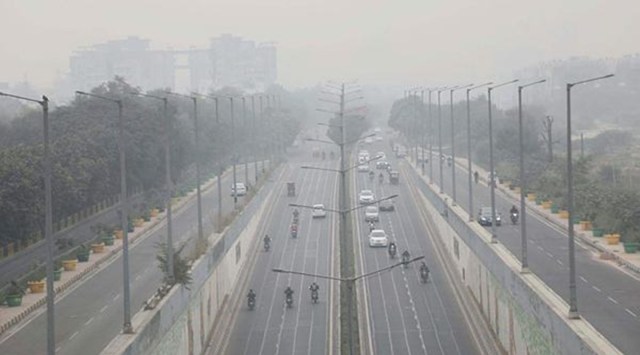Delhi: Forecasting systems failed to predict high air pollution episodes last winter, says case study
When the restrictions were imposed in Delhi, the air quality did not descend into the ‘severe +’ category, but the first ‘severe’ air quality period in December was seen from Dec 21 to 26, when all restrictions, except for those on industrial activities, were lifted.
 The goal of the NCAP, which was launched in 2019, is to reduce the level of particulate matter concentrations by 20% to 30% from its 2017 levels by 2024. (Express File)
The goal of the NCAP, which was launched in 2019, is to reduce the level of particulate matter concentrations by 20% to 30% from its 2017 levels by 2024. (Express File)Last winter, air pollution forecasting systems for Delhi “picked up the pollution trend but could not predict high pollution episodes,” according to a case study by the Council on Energy, Environment and Water (CEEW).
To reduce high air pollution episodes further during the next winter, forecasting systems would need to provide more accurate predictions of PM2.5 concentration levels, according to the study. Since short-term emergency measures were introduced based on the forecasts, the systems helped “prevent extremely severe air pollution episodes”, the study stated.
“The first set of restrictions was put in place on 16 November 2021, and all were lifted by 20 December 2021, save the one on industrial operations. During this period, all the forecasts except AQ-EWS (3-day) (Air Quality Early Warning System) underpredicted PM2.5 levels,” the study said.
When the restrictions were imposed, the air quality did not descend into the ‘severe +’ category, but the first ‘severe’ air quality period in December was seen from Dec 21 to 26, when all restrictions, except for those on industrial activities, were lifted. This was the longest ‘severe’ air quality spell of the season, going by the study, which also said that the lifting of the restrictions was “ill-timed”.
Around 64% of Delhi’s winter pollution load comes from outside Delhi, according to the study, which used data from UrbanEmissions.Info, the Decision Support System for Air Quality Management in Delhi, and the Air Quality Early Warning System for Delhi.
Local sources of PM2.5 include transport (12%), dust (7%), and domestic biomass burning (6%).
“The forecasts were effectively able to pick up trends… at this hour of the day, the air quality is going to be poor. Where the forecasts have not performed as well is when it comes to predicting the kind of pollution episodes. There have been days when the pollution was in the ‘severe’ category, but the forecasts have said that it will be in the upper end of the ‘very poor’ category. This is because the forecasts are underpredicting,” said Tanushree Ganguly, one of the authors of the study.







